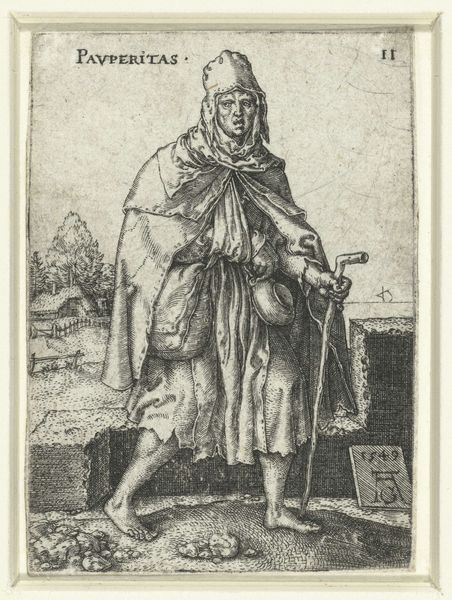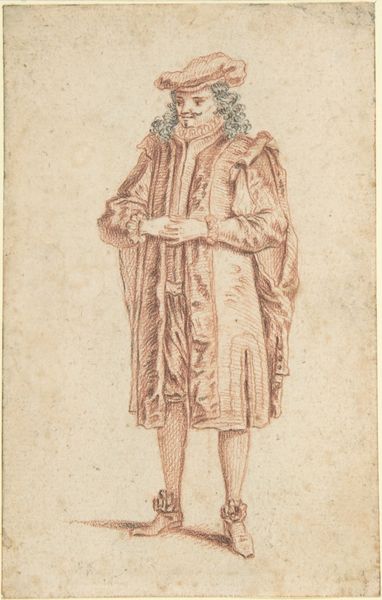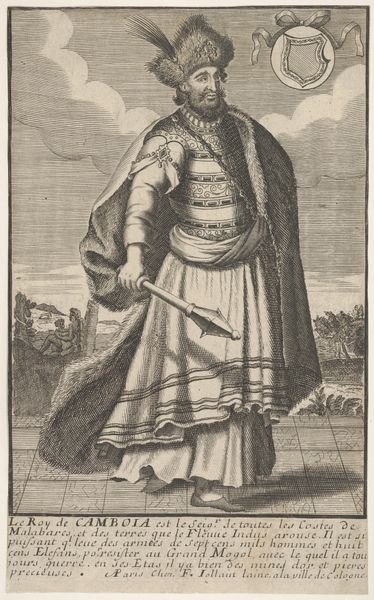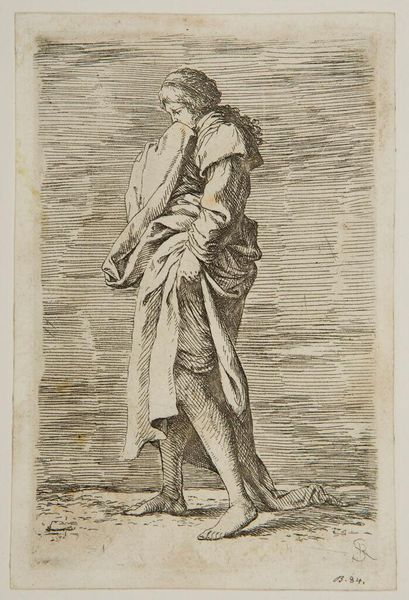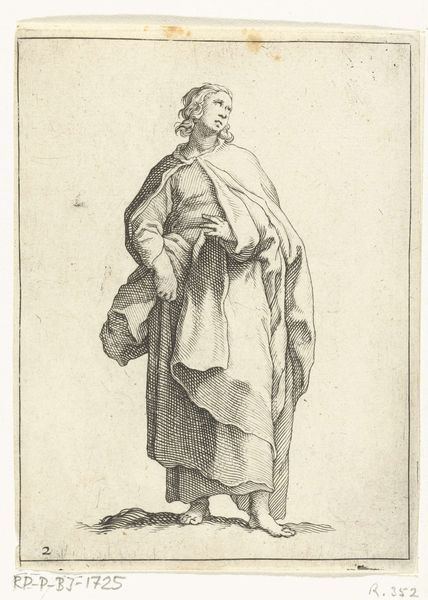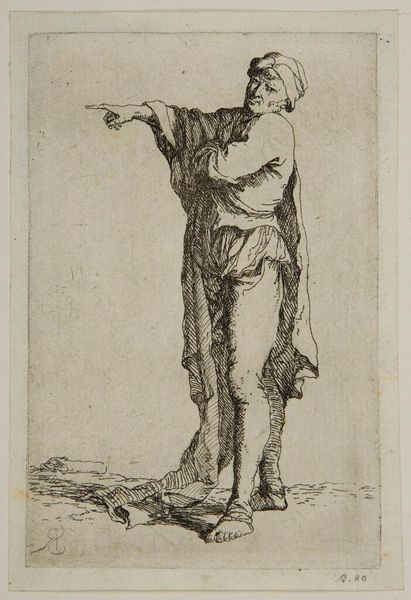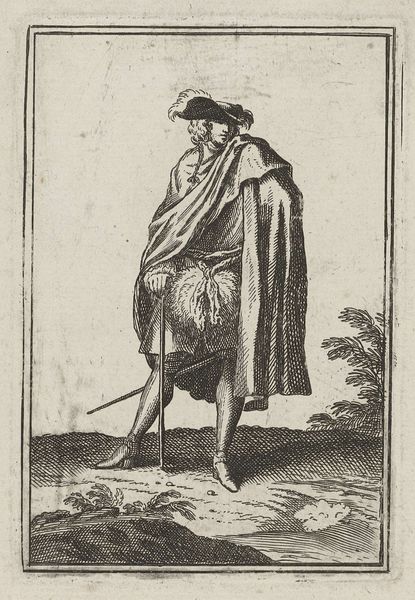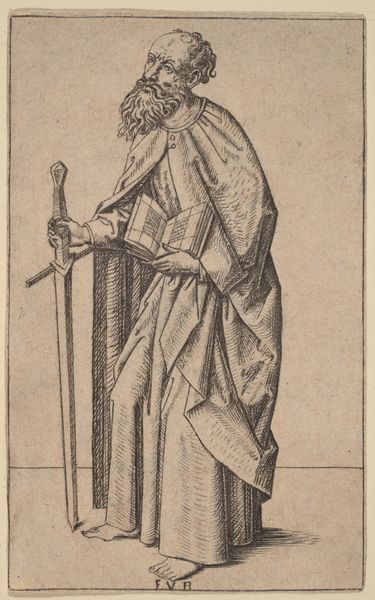
Dimensions: height 70 mm, width 50 mm
Copyright: Rijks Museum: Open Domain
Curator: Heinrich Aldegrever's "Pauperitas," created in 1548, now residing here at the Rijksmuseum, strikes me immediately with its stark portrayal of destitution. What are your first thoughts? Editor: It exudes vulnerability. The figure seems to be emerging from the lower corner, burdened but also resolute. The grayness of the print, the rough strokes--it all evokes a feeling of hardship. Curator: Absolutely. Aldegrever, known for his intricate engravings during the Northern Renaissance, employed techniques that amplify the textures, such as the varied hatching to give the pauper's garments their worn, almost disintegrating quality. Editor: Which feels quite deliberate, doesn’t it? Considering the context of the Reformation and socio-economic shifts occurring then, it could be seen as a direct commentary on social inequality, especially within a religious framework where humility and poverty were sometimes glorified, but also demonized. It reminds me of Walter Benjamin's theories around the politicization of aesthetics... Curator: I appreciate that reading. I am particularly drawn to the geometry; the contrast between the rounded figure of the pauper and the angular steps to the left creates a spatial tension. There is, of course, a symbolic language here, particularly in how Aldegrever is representing, with detail and precision, even such mundane details like bare feet on stone steps. Editor: And I see in those bare feet not just poverty but also the lack of social safety nets. Feet on stone remind me of the casual cruelty enacted when communities fail to ensure a minimum of material security. Was the "Pauperitas" perhaps an intentional indictment of society at the time? I see this in how the figure occupies our space: front and center, demanding attention, an unsentimental accounting. Curator: Possibly. From a purely structural angle, though, the placement and scale cannot be ignored. Consider also the figure’s gaze…or the obscuring of it. This isn’t portraiture; this is something else altogether. The effect is unnerving precisely because the figure is rendered as both particular and universal. Editor: I agree that this figure pushes back against viewers; that obscured gaze almost dares the viewer to look closer and think deeper about structures that render individuals nameless. "Pauperitas" really encapsulates the precarity of existence, still relevant centuries later. Curator: A remarkable artwork that, as we have explored today, reveals hidden layers within the apparent simplicity of its formal composition. Editor: Definitely. Its resonance lies in the enduring questions it provokes.
Comments
No comments
Be the first to comment and join the conversation on the ultimate creative platform.
